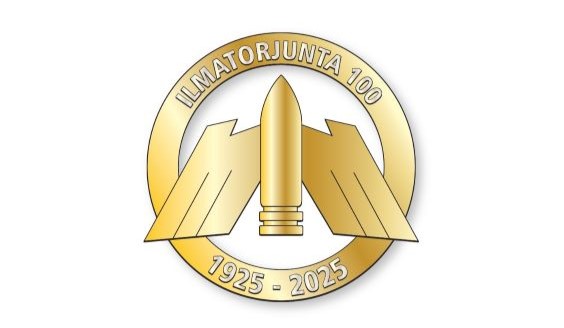Independent Finland’s high-performance ground-based air defence celebrates its 100-year journey

Independent Finland’s ground-based air defence turns 100 this year. In the course of decades, ground-based air defence has been developed for the purpose of the country being able to respond to air threats. Ground-based air defence, founded on a multi-layered capability of missile systems and projectile-based air defence weapons to repel offensives, on networked air defence command and control, and competent regular personnel, conscripts and reservists, is today a very effective and capable branch.
The operating of the ground-based air defence branch is considered to have begun on 1 July 1925, when the first anti-aircraft training unit, the Air Defence Contingent was founded in Suomenlinna. The contingent was established with the active support of Jaeger Lieutenant Colonel Väinö Valve who was serving as Commander of the Coastal Artillery.
The first air defence battery was founded on 18 June 1926 with Captain Åke Törnroos as its Commander. The battery was armed with two 76 ItK/14 PK Putilov anti-aircraft cannons seized from armoured Russian trains. These cannons were used to carry out the first anti-aircraft firings with artillery weapons on Länsi-Mustasaari island in Suomenlinna on 16 September 1927. Ground-based air defence has come a long way to where it stands today.
The main task of ground-based air defence is to counter attacks from the air against the Defence Forces’ troops and assets and critical assets of the society. This was a challenge the young branch became faced with on the very first day of the Winter War, 30 November 1939, when the Soviet Union started bombarding our country. The requirement to have ground-based air defence to protect our country proved crucial all through the Winter and Continuation Wars; efforts to protect the capital city region, in particular, against massive Soviet bombing raids in February 1944 amounted to a significant defensive victory for Finland’s independence.
For decades, our ground-based air defence has been developed consistently and as an entity to respond optimally to any airborne threat. Protecting the homefront, especially the capital city region during the Winter and Continuation Wars and entering the era of missile air defence during the Cold War have represented important milestones in ground-based air defence.
The threat has changed over the years, and as the war of Ukraine has shown, it has become a military threat of decisive importance. In the first decades of the branch, our defence capability was based on artillery equipment. The late 1970s brought Finland to the era of missiles with the country acquiring its first ground-based air defence missiles. This gave birth to the idea of layered GBAD in which different weapon systems could be used against different types of air threats.
Today, the layered array consists of several different ammunition systems (23mm and 35 mm guns) and missile systems, including the following GBAD missile systems: NASAMS (ITO12), Crotale (ITO90), ASRAD-R (ITO05), RBS70 (ITO05M) and Stinger (ITO15). The layered missile air defence will be complemented by the procurement of the high-altitude capability missile system David’s Sling. This layered approach constitutes the strength of Finland’s ground-based air defence.
The modern air threat is very complex; it can not be countered with just one weapon system. This is what also the war of Ukraine has shown us. We need radar systems to detect targets, missile systems to defend against aircraft and helicopters flying at different altitudes, and projectile air defence weapons to repel drones and cruise missiles. Developing ground-based air defence is indispensable for possessing the capability of countering the full range of any new airborne threats. At the moment, in addition to the high-altitude capability, ground-based air defence is being developed by continuing to work on the defence capability of drones.
Finland’s layered air defence with GBAD and Air Force assets conducting seamless cooperation with one another works excellently. The layered defence capability is ensured by the Finnish integrated air defence command and control concept which generates excellent situation picture against air threats for the Services, including all ground-based air defence units. This is a domain in which Finland has much to offer to our international partners as well.
Our 100-year old ground-based air defence is in great shape and its future looks bright. Today, Finland’s ground-based air defence has a strong capacity to counter threats, it is versatile, modern and evolving. And it offers our conscripts and reservists interesting and challenging tasks. Finland needs ground-based air defence to ensure its defence - this is an incontestable lesson learned from the war of Ukraine.
Inspector of Ground-based Air Defence, Colonel Mano-Mikael Nokelainen



